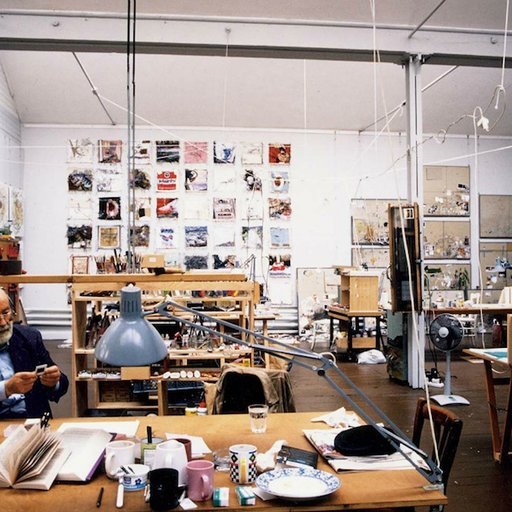When people talk about emerging—or emergent—art, that doesn't necessarily mean that the work in question is dated 2013, or that the scrappy artist responsible was born after 1980. Instead, collectors seeking to buy art that is ahead of its time can be just as excited to discover a mid-career painter whose subtle work is only beginning to gain curatorial interest, or a long-overlooked veteran whose challenging achievements are providing inspiration for a new generation of artists. In fact, each approach can be deeply satisfying in its own way, offering a chance for collectors with modest budgets to support a living artist at a critical time in his or her career—a good turn that may be rewarded in spades if they becomes a success.
In the world of art advisory, Lowell Pettit and Courtney Pettit of Pettit Art Partners have gained a reputation for being particularly savvy about spotting rising or under-appreciated artists. We spoke to them about how collectors can build collections of exceptional, ahead-of-the-curve art without necessarily breaking the bank.
"EMERGING" DOESN'T ALWAYS MEAN CHEAP
“One of the most often used and abused or confused terms within the sector of contemporary art is 'emerging,'” says Lowell. “And I think one can meditate on the fact that there are emerging artists, on the one hand, and then there are emerging prices, and they’re not necessarily the same thing.” In fact, at a time when the robust art market can swiftly drive a young artist's work into the five-figure range before any knows what's happened, these can be very different things indeed.
WHEN THE MARKET IS HOT, LOOK TO THE PAST
With many collectors willing to pay handsomely to stay on the vanguard of art, keeping up with the Joneses can be a daunting possibility. “It’s very easy to get caught up in the new," says Courtney. "What we find with some of our clients is that we’re brought on to actually tone down their collecting habits, because collecting art at great price points can be quite intoxicating." While they emphasized that they're certainly enthusiastic about new artists and innovative work, the Pettits believe beginner collectors shouldn't necessarily devote all their attention and resources to the new. “Mindful of the price point in this landscape and market, it behooves a collector—especially one with an eye toward originality and autonomy—to look at an artist that we might call emerging even if they are in fact late career artists," Lowell said. “It’s an amazing opportunity, and I think it’s a pleasure, to think about the catalogs of artists who are even in their 80s or 90s."
FIND THE BLIND SPOTS IN THE MARKET
Once one begins delving into a wider range of artists, it can be possible to uncover a unique piece of art-historical import for the same price as the work of a young, raw talent. “Considering the new price threshold, I feel like a responsible adviser and a responsible collector should be collecting without an eye for the usual data points," says Lowell. "That means not thinking that an artist needs to have to have gone to Yale or Columbia or Hunter, not thinking that they have to be under the age of 35—not thinking about anything other than nuancing your eye, looking deeper into art history, and having conversations about the work." This can be helpful in case the judgements of an exuberant market become rebalanced in future years. "It's fascinating to me," he adds, "that at auctions in the same week in a single city an Alice Neel painting can be acquired for the exact same dollar amount as an Oscar Murillo.”
COMPARE AND CONTRAST
If one worries that work by older artists might seem outdated next to pieces by fresh art-school grads, it pays to remember that the younger artists are often deliberately putting their work in conversation with the previous generation's achievements. Lowell brought up the work of Robert Overby, a late California artist who has gained eager interest in recent years, in part due to being a major touchstone for contemporary artists like Theaster Gates. “No one is confusing the fact that Robert Overby is not an emerging artist," says Lowell. "And yet, you’d be hard pressed to not consider the price point of his work near or equivalent to the so-called emerging artists, which is to say you can acquire a substantive, art-historically important Robert Overby for the same as a new Theaster Gates.”
Collecting with this kind of perspective, Lowell adds, creates for some rich curatorial possibilities within one's home. “I think the best collections have always taken opportunities to create a much deeper conversation in terms of art-historical references," he says. "I think that’s particularly apt with Overby and Gates."



























